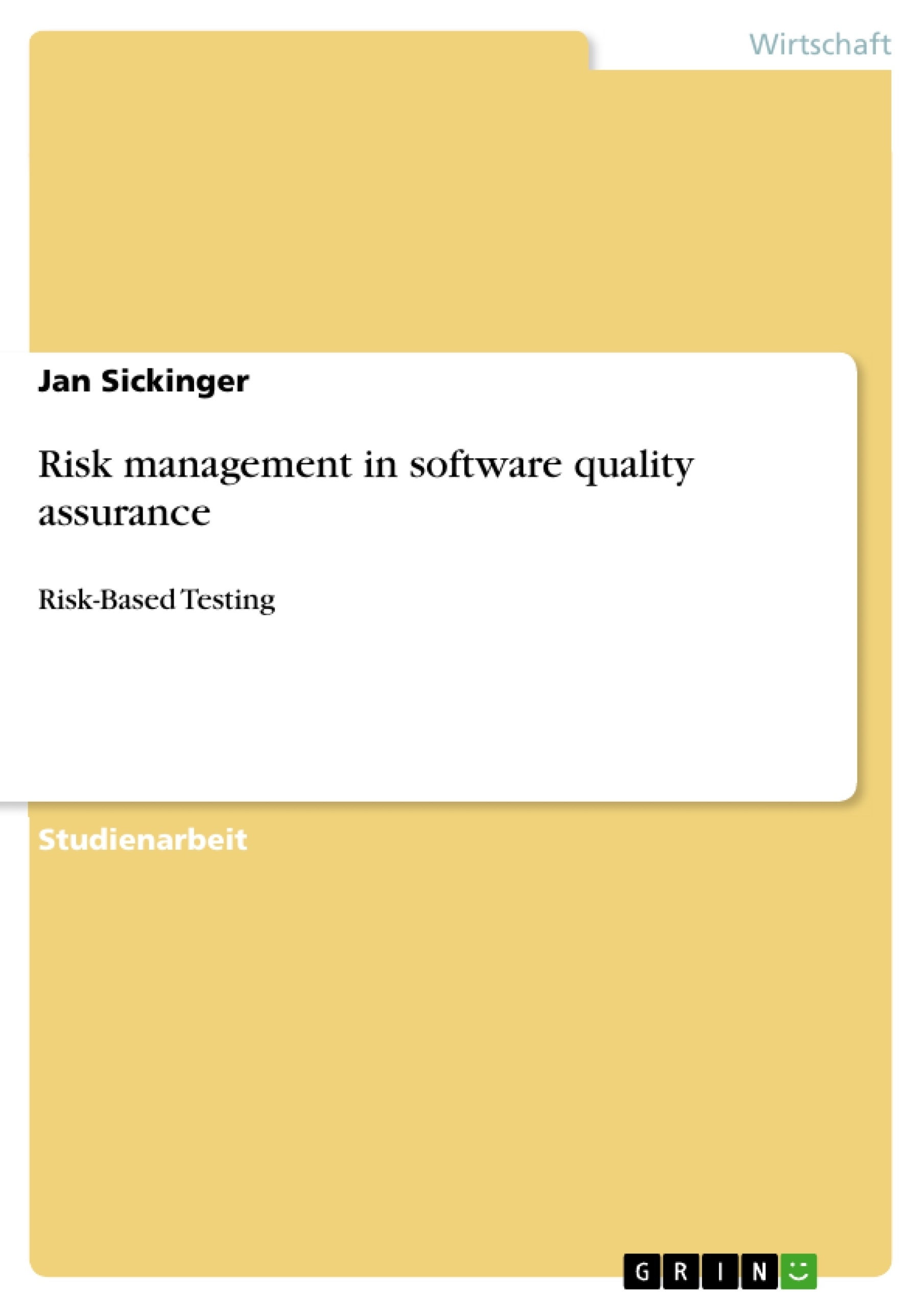In general, risk can be expressed as product of amount of damage and probability of
damage. Due to the fact that software controls more and more aspects of life in modern
industrialised societies, software failures inherit risks for businesses, human health or
even human life. Software testing is a structured approach to minimise product risks of
software systems. When the problem arises that, due to a given budget and timeframe, it
is not possible to cover all parts of the software through testing, Risk-Based Testing is a
possibility to test the most critical parts of the software first or more intensive. When
using this method, both amount of damage and probability of damage must be
quantified. Quantifying the amount of damage must happen by considering the different
viewpoints of the software system’s stakeholders, while quantifying the probability of
damage can only happen indirectly, for example through quality indicators like the
complexity of the software itself, the quality of the documentation etc. When having
derived quantitative values both for the amount of damage and the probability of
damage, the priority of the test cases can be determined by using a risk matrix.
Furthermore, these values can also be used for metrics.
An extension of Risk-Based Testing is Risk and Requirement-Based Testing, where
product risks are linked to the requirements against which the software is tested in order
to gain an overview if the lists of requirements and risks defined for the software are
complete.
Inhaltsverzeichnis
- Executive summary
- Table of Contents
- List of Abbreviations
- List of Figures
- List of Tables
- 1 Introduction
- 2 Methodology
- 3 Definitions
- 3.1 What is risk?
- 3.2 Risks & Software
- 3.3 What is software quality?
- 3.4 What is software testing?
- 4 Risk-Based Testing
- 4.1 Risk identification & classification
- 4.2 Risk assessment
- 4.2.1 Quantifying amount of damage (according to REDMILL 2004, pp. 6 - 8)
- 4.2.2 Quantifying probability of damage
- 4.2.3 Using metrics (description according to AMLAND 2000)
- 4.3 Allocating, selecting and monitoring risk (PINKSTER et al. 2006, pp. 29 - 31)
- 5 Risk and Requirement-Based Testing
- 6 Conclusion
- References
- Declaration
- ITM Checklist
Zielsetzung und Themenschwerpunkte
Diese Arbeit befasst sich mit dem Thema Risikomanagement im Bereich der Softwarequalitätssicherung. Ziel ist es, die Methode des "Risk-Based Testing" vorzustellen und zu erläutern, wie diese zur Minimierung von Risiken in Softwareprojekten eingesetzt werden kann. Die Arbeit beleuchtet die Bedeutung von Risikomanagement im Kontext von Softwareentwicklung und erläutert, wie Risiken durch gezieltes Testen identifiziert, bewertet und minimiert werden können.
- Risikomanagement in der Softwareentwicklung
- Risikobewertung und -quantifizierung
- Einsatz von "Risk-Based Testing"
- Methoden der Risikominimierung
- Integration von Risikomanagement in den Softwareentwicklungsprozess
Zusammenfassung der Kapitel
Die Arbeit beginnt mit einer Einführung in das Thema Risikomanagement und beleuchtet die Bedeutung von Softwarequalitätssicherung. Es werden verschiedene Definitionen für "Risiko" und "Softwarequalität" gegeben und die Rolle von Softwaretests in der Risikominimierung erläutert. Kapitel 4 widmet sich dem "Risk-Based Testing" und beschreibt die einzelnen Schritte von der Risikoidentifizierung bis hin zur Risikobewertung und -minimierung. Dabei werden verschiedene Methoden zur Quantifizierung von Schäden und Wahrscheinlichkeiten vorgestellt. Kapitel 5 beschäftigt sich mit der Weiterentwicklung des "Risk-Based Testing" zum "Risk and Requirement-Based Testing", wobei die Verknüpfung von Risiken mit den Anforderungen an die Software im Vordergrund steht.
Schlüsselwörter
Die Arbeit befasst sich mit den Schlüsselbegriffen Risikomanagement, Softwarequalitätssicherung, Risk-Based Testing, Risikobewertung, Risikominimierung, Softwareentwicklung, Anforderungen, Testen, Qualität, Schaden, Wahrscheinlichkeit, Risikoanalyse, Stakeholder und Metrics.
- Quote paper
- Jan Sickinger (Author), 2010, Risk management in software quality assurance, Munich, GRIN Verlag, https://www.grin.com/document/178001



